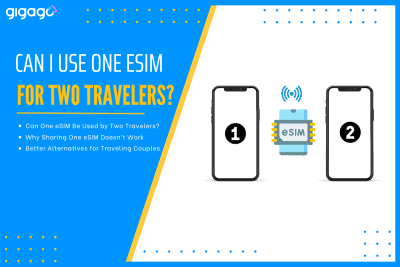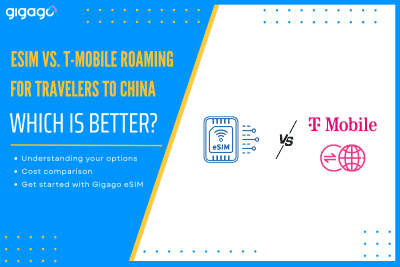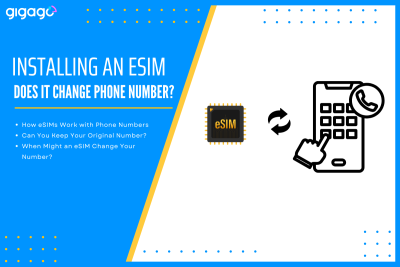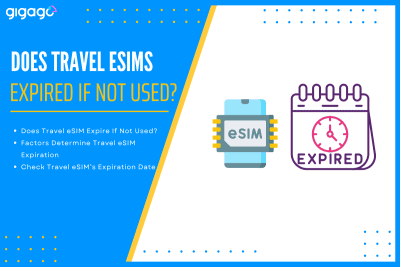When couples or friends travel together, it’s common to look for ways to save on mobile data. One question often comes up: “Can two travelers use the same eSIM?” The short answer is no – one eSIM cannot be used by two different travelers on two separate devices. However, there are practical alternatives that can […]
Can an eSIM be hacked?
In today’s digital world, many people are asking “Can an eSIM be hacked?” The answer is yes – while eSIMs offer advanced security features, they’re not immune to cyber attacks. Hackers can exploit vulnerabilities to access your phone number, personal data, and digital accounts. This guide explains what to do if you suspect your eSIM has been compromised and how to protect yourself from future attacks.
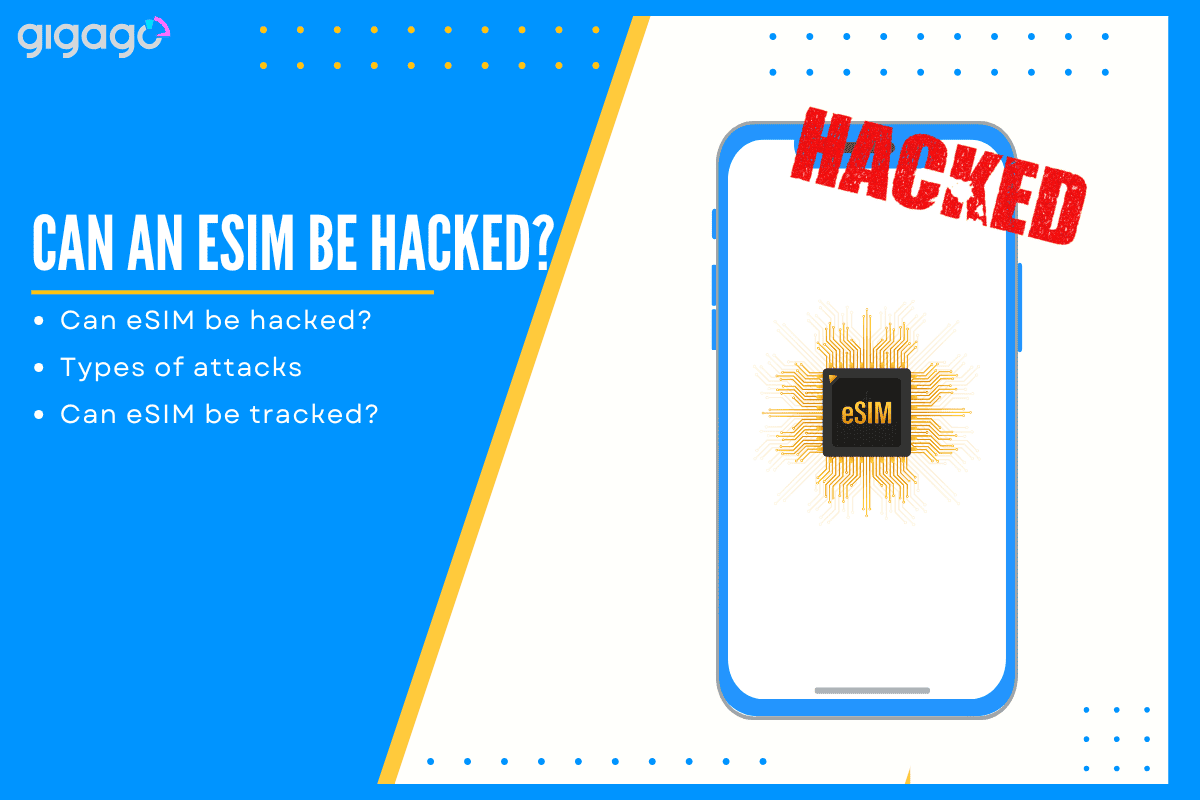
In this article
I. Can eSIMs be hacked?
Yes. While more secure than physical SIM cards, eSIMs can still be hacked like any digital technology. Protect your eSIM by using strong passwords, updating your device, and avoiding suspicious links.
II. Types of attacks
Hackers primarily use social engineering tactics to target eSIM users. They often pose as phone carriers through scam calls, create fake carrier websites and apps, distribute malicious QR codes, or attempt SIM swapping schemes to gain control of your number.
eSIM swapping
SIM swapping happens when criminals convince your phone carrier to transfer your number to their device. Though eSIMs are harder to swap than physical SIMs, hackers gather personal information through fake emails and phone calls to impersonate you to your carrier. The strength of your carrier’s security checks determines how well your number is protected against these attacks.
Malware attacks
Malware on your device can give hackers a way to access your eSIM. Your device can get infected when you open bad email attachments or visit harmful websites. Once inside, malware looks for security gaps in your device that could let attackers control your eSIM.
Firmware security gaps
Outdated firmware creates security holes that hackers can use to break into your eSIM. While carriers handle eSIM updates directly, you must still install device firmware updates when they arrive. Delaying these updates leaves your eSIM open to attacks through known security flaws.
III. What can a hacker do with your eSIM?
A hacked eSIM gives criminals powerful access to your digital life in three main ways:
1. Stealing Authentication Codes
A hacked eSIM lets criminals steal your two-factor authentication codes to break into your bank, email, and social media accounts. This bypasses the very security meant to protect your accounts.
2. Accessing Private Messages
Criminals with eSIM access can read all communications tied to your phone number. They see your private texts, photos, and get into your messaging apps, exposing both personal and work conversations.
3. Identity Theft
The worst threat is identity theft. Criminals message your contacts pretending to be you, often requesting urgent money transfers. These scams work because people trust messages from familiar numbers. Though eSIMs are secure, one hack gives access to your entire digital life.
Though eSIMs are more secure than physical SIMs, criminals target them because breaking into one eSIM can unlock access to many valuable accounts.
IV. Can an eSIM be tracked?
Yes. An eSIM can be tracked in two main ways:
- Network Provider Tracking. Mobile carriers track eSIMs to provide services and help with security. When your device is stolen and GPS is off, carriers can find your phone’s location using cell tower signals. This tracking is legal and helps recover lost devices.
- Criminal Tracking. Though harder, expert hackers can track eSIMs by finding network weaknesses. They often combine multiple methods – GPS, WiFi locations, and cell data – to follow your device. While eSIMs are just one way to track phones, good security habits help protect your privacy.
V. Signs that your eSIM may be hacked
eSIM, a digital SIM technology, is becoming more common. While convenient, eSIMs can be vulnerable to attacks. Your eSIM might be compromised if you notice these important signs.
Security alerts from your carrier about account changes you didn’t make are a major warning sign. Pay attention if you suddenly can’t make calls or receive messages, as service loss often indicates unauthorized access.
Watch your monthly bills closely. Unexpected charges or strange fees could mean someone is using your service without permission. Be concerned if phone tracking apps show your device in places you haven’t been.
Another red flag is being locked out of your regular accounts or social media. Also concerning are text messages asking you to restart your device, especially from unknown sources.
VI. eSIM security measures
eSIM technology uses several key security features to protect your data and prevent unauthorized access.
Built-in protection
Unlike removable physical SIM cards, eSIMs are permanently embedded in your device. This design prevents theft and tampering, making it harder for attackers to access your information.
Data protection & updates
Many carriers encrypt your data, turning it into complex codes that protect your information during transmission. They also send automatic security updates over-the-air (OTA), fixing potential security issues without requiring user action.
Identity verification
Carriers use strong security checks to confirm your identity when activating eSIMs. These may include:
- Password protection
- Face or fingerprint scanning
- Security codes These steps help prevent unauthorized device activation.
Provider security
Network providers maintain security by:
- Monitoring for unusual activity
- Updating security regularly
- Using advanced encryption methods
- Protecting against unauthorized access
This layered security approach helps keep your eSIM and personal information safe from cyber threats.
VII. How to protect yourself from eSIM hacking
The rise of eSIM technology brings new security challenges. Here’s how to protect your digital identity from cyber threats.
Core protection steps
- Update all devices and apps regularly
- Use strong, unique passwords for each account
- Enable authentication apps instead of SMS verification
- Keep personal information private
Stay alert
Watch for fake messages asking for personal information. Real companies never request sensitive details through email or phone calls. Always verify requests through official company channels.
Daily safety habits
Check account activity regularly. Look for unusual charges or login attempts. Contact your provider immediately if you notice anything strange.
Quick response plan
If you suspect your eSIM is compromised:
- Contact your service provider
- Change important passwords
- Check account settings
- Monitor banking activity
Following these basic steps helps protect your eSIM and personal information from cyber attacks. Regular security checks and careful online behavior are your best defense.
VIII. What should you do if your eSIM is hacked?
Quick action can stop hackers and protect your accounts. Contact your service provider immediately to report suspicious activity and block unauthorized access. While waiting for help, change all important passwords and enable authenticator app protection.
Watch your accounts closely for unusual activity like strange calls, messages, or unexpected charges. Report any new problems to your provider right away. Regular account monitoring helps catch issues early.
Keep your provider’s emergency contact number saved for quick reporting. Fast response and basic security steps protect your personal information and prevent account misuse.
